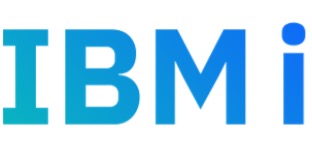Announcing IBM i 7.5 TR1, 7.4 TR7 and More
It’s time to announce technology refreshes again. On October 11, 2022, we announced IBM i 7.5 TR1 and 7.4 TR7. And, as always, in addition to those specific “technology refresh” delivery vehicles, there are updates for Db2, Navigator, RPG and more.
But First: Power10 Scale-Out
But before I get to the TRs, I owe it to everyone to talk about the announcement I “missed” blogging about. On July 12, IBM introduced the Power10 version of the scale-out servers—the part of the Power product line which is used by a very large part of the IBM i customer base.
We’ve already begun seeing customers adopting these servers, and that’s great. But I’ve also been getting questions because we didn’t announce support for TRs with them. I understand—normally when we have a new system come out, we need a TR for it. However, the development of these Power10 systems was done in parallel with the 7.5 major release, and with 7.4 TR6, so those are the base levels you need if you want to use these new systems. You don’t need another TR—though you do need a specific PTF for each:
- IBM i 7.5 Base + PTF SI80676
- IBM i 7.4 TR6 + PTF SI80673
And Now, the October Announcements

The IBM i development and product teams were very busy post-7.5, getting new content ready for you. For the detailed descriptions, see the “support pages.”
As usual, this blog will pick a few interesting highlights, but those pages will have everything.
Db2 for i and Watson Geospatial Data
One of the coolest things in this set of announcements is Db2 for i incorporating support for using IBM Watson’s geospatial support.
Wait—you don’t know what geospatial data is? Never fear! I have a link, and a quote:
“Geospatial data is information that describes objects, events or other features with a location on or near the surface of the earth. Geospatial data typically combines location information (usually coordinates on the earth) and attribute information (the characteristics of the object, event or phenomena concerned) with temporal information (the time or life span at which the location and attributes exist).”
And you can learn even more about geospatial data here.
We’re all going to have fun learning about the power of this collaboration from Scott Forstie and his team, but for the purposes of this blog, I want to impress upon you how fun it is to have part of our IBM i team working so closely with the IBM Watson team on ways to use the advancements IBM is making in artificial intelligence in the business data arena.
Db2 WebQuery Data Transformation: IBM i Db2 Data to and From Clouds
One of the common modernization requirements we’re hearing relates to allowing Db2 to interact with other data repositories, especially data sources in the cloud. Now, there are many ways to accomplish this, but the Db2 WebQuery product has been helping clients extract transform and load (ETL) data from and into Db2 in many ways, and now it’s helping clients who want to have Db2 for i and cloud data sources interact. Check it out here: Db2 Web Query DataMigrator ETL.
Db2 Mirror: IFS Mirroring Support
One of the “less than perfect” attributes of the initial Db2 Mirror product was that data in IBM i’s IFS had to be managed outside of Db2 Mirror—using independent ASPs and (typically) IBM PowerHA System Mirror for i. Well, as of this latest announcement, Db2 Mirror has a way to deal with IFS objects in a mirrored environment, all on its own (with a little set-up from you). I know, I know—this was the thing holding many of you back—so you’re welcome. (Seriously, more of you ought to be looking at how a continuous availability environment could help your business, and one by one, we keep knocking down hurdles to your implementation. Give it a look!)
Navigator Enhancements, Especially the Audit Journals!
The “New Nav” Navigator is amazing. And in the update for this announcement, I think it might have even more enhancements than Db2 does. (Not that it’s a competition, right Scott Forstie and Tim Rowe?)
One of the highlights is the handling of Audit Journals. You can see daily or weekly views, drill into specific entries and launch chart views into new windows. It’s impressive—and extremely intuitive and useful.
But there’s much more. Just, wow.
IBM i Merlin: Documentation on Github and How-to Videos
The announcement which has gotten the most attention from May is IBM i Merlin. The introduction of this product has been kickstarting conversations about application modernization, and has also caused lots of people to ask for more information. I’m going to attach a few links to the end of this blog which help you find the information you want, but one of the newest sources is now in GitHub. It can describe Merlin, and has links to how-to videos which are good demonstrations of the features of the product as well.
RPG, NVMe Password Protection, Security and More
I have a confession to make: Whenever we have one of these announcements, I end up having to do a lot of reading to catch up on all of the enhancements the team completed. I’ve done a bunch, but I’m not done yet. When the support pages go live, I’m going to study some more. I’ve seen my team talk at a high level of about new RPG features, password protection for NVMe devices, some new security features and more.
But that’s enough for this blog. The team has outdone itself, considering the fact that we introduced a major release less than six months ago!
I hope to write a few more blogs soon—I have to tell you about the Infor user group conference I attended; I want to opine about the value (and limitations) of the rush to micro-services in our industry; I’m impressed by the demand for our in-person time after two years of online-only. There’s lots to write about, if I can ever find time to do it.
So, until next time—be well, and do great things!
IBM i Merlin Links and Resources

- The IBM i Merlin product page
- The IBM Support page, which is essentially the page of important links
- We did a series of four recorded presentations about Merlin—what it is; how to use the Integrated Development Environment; how to use the DevOps part of Merlin; and how to set up Merlin. (Beware: I have a feeling these will get a lot of hits, and that might make the host take them down … )
- The “Docs” page, which is the official documentation—but I would start with one of the overviews, rather than this
- And finally, to restate what was above in this blog, the GitHub documentation repository